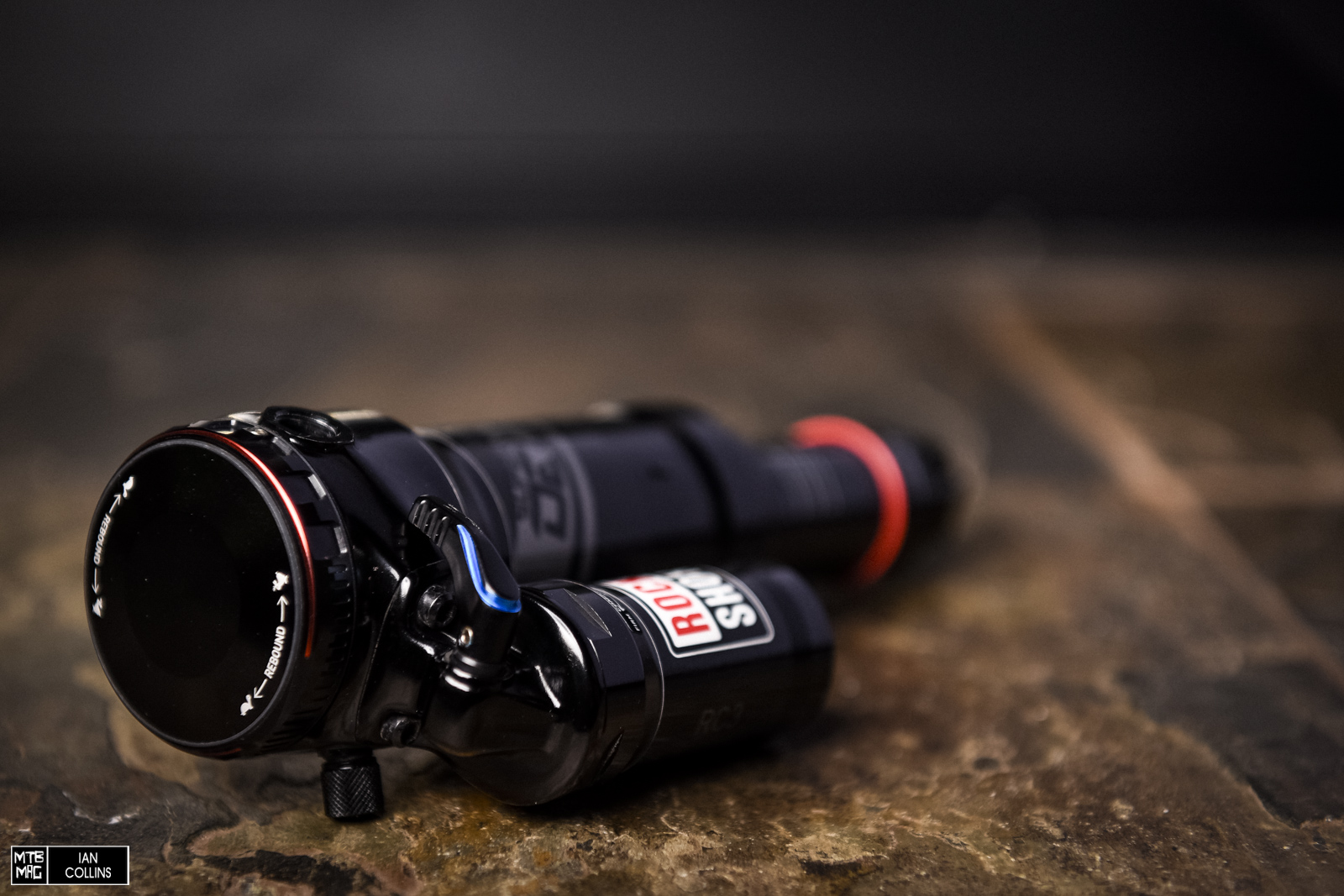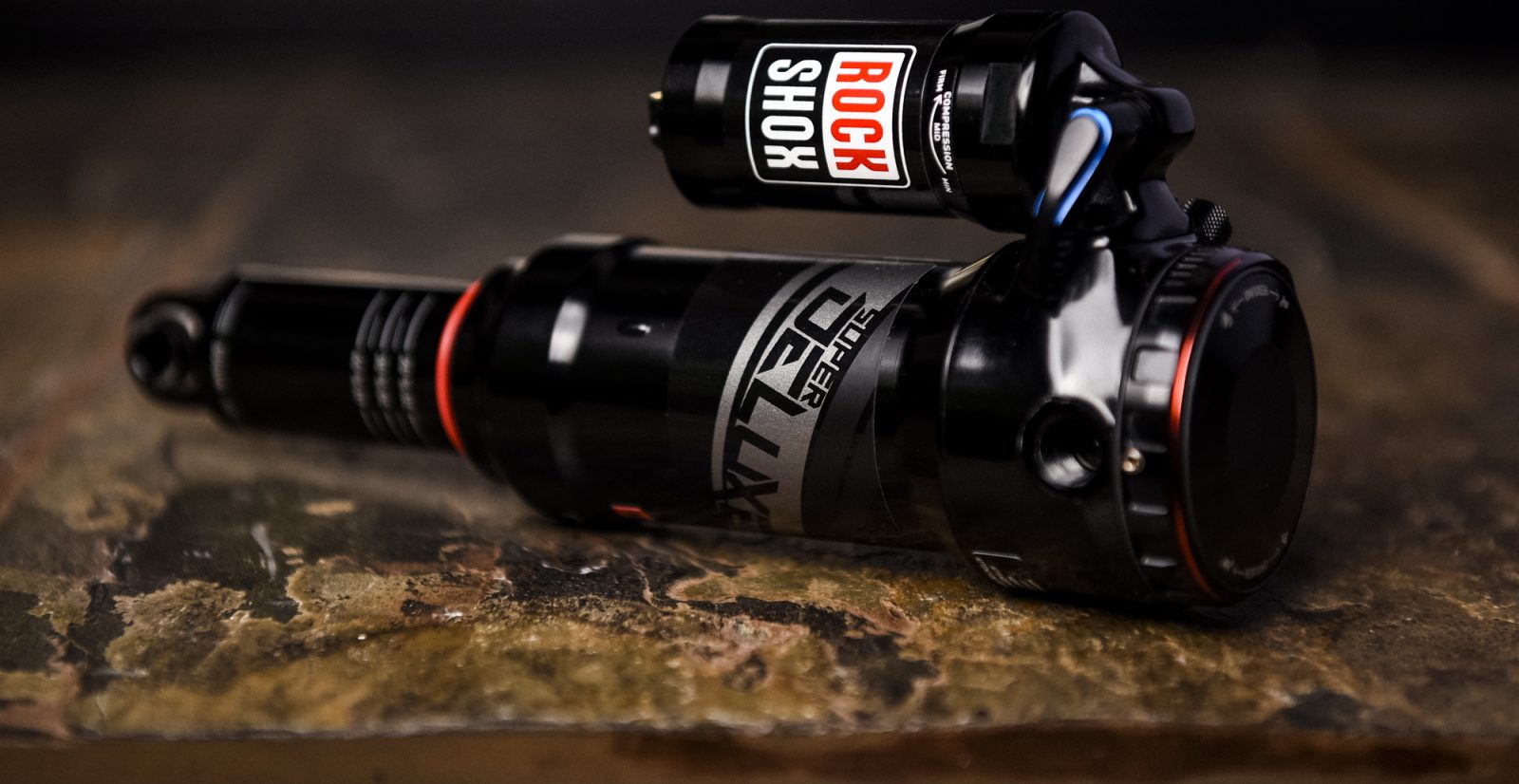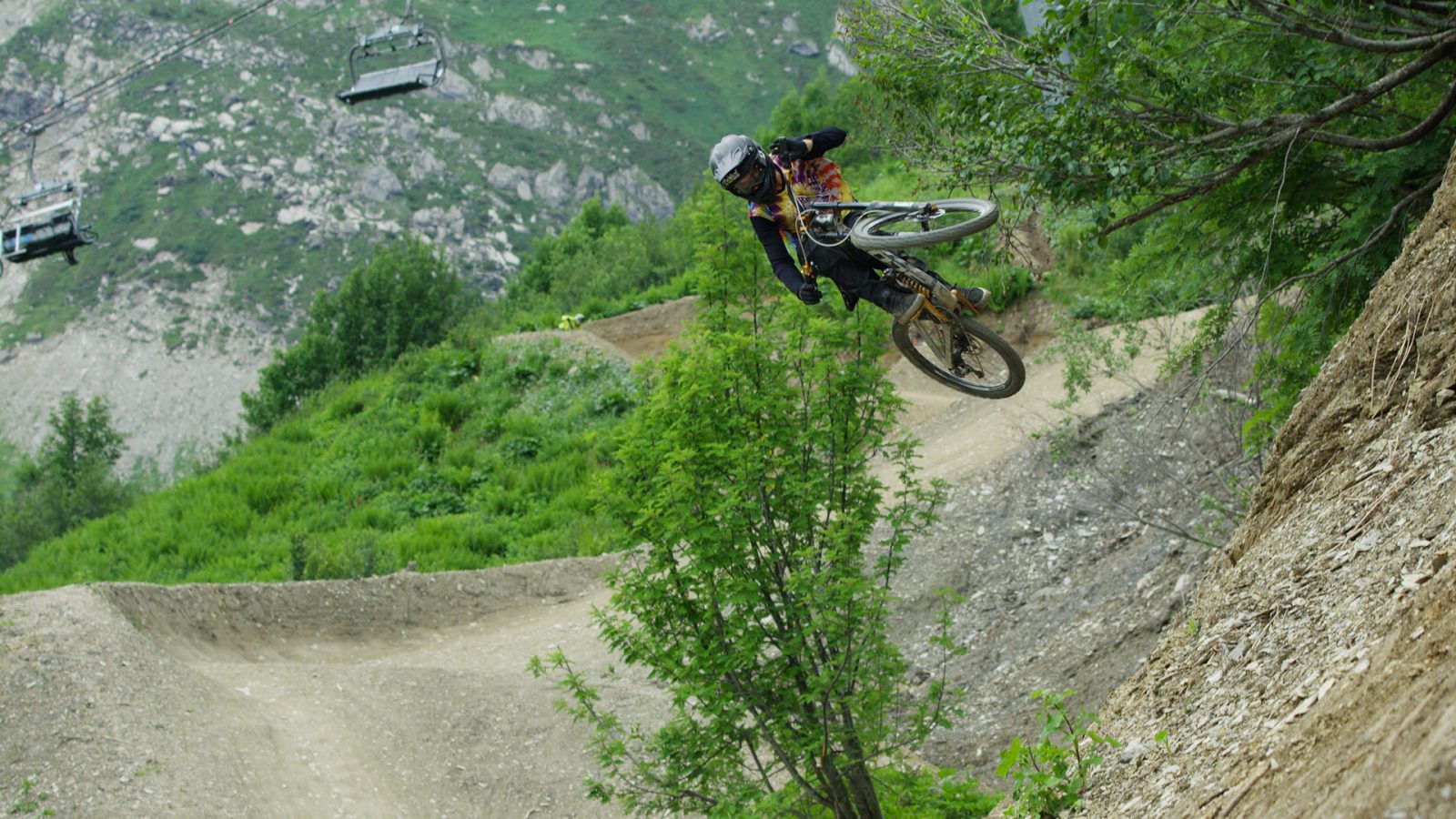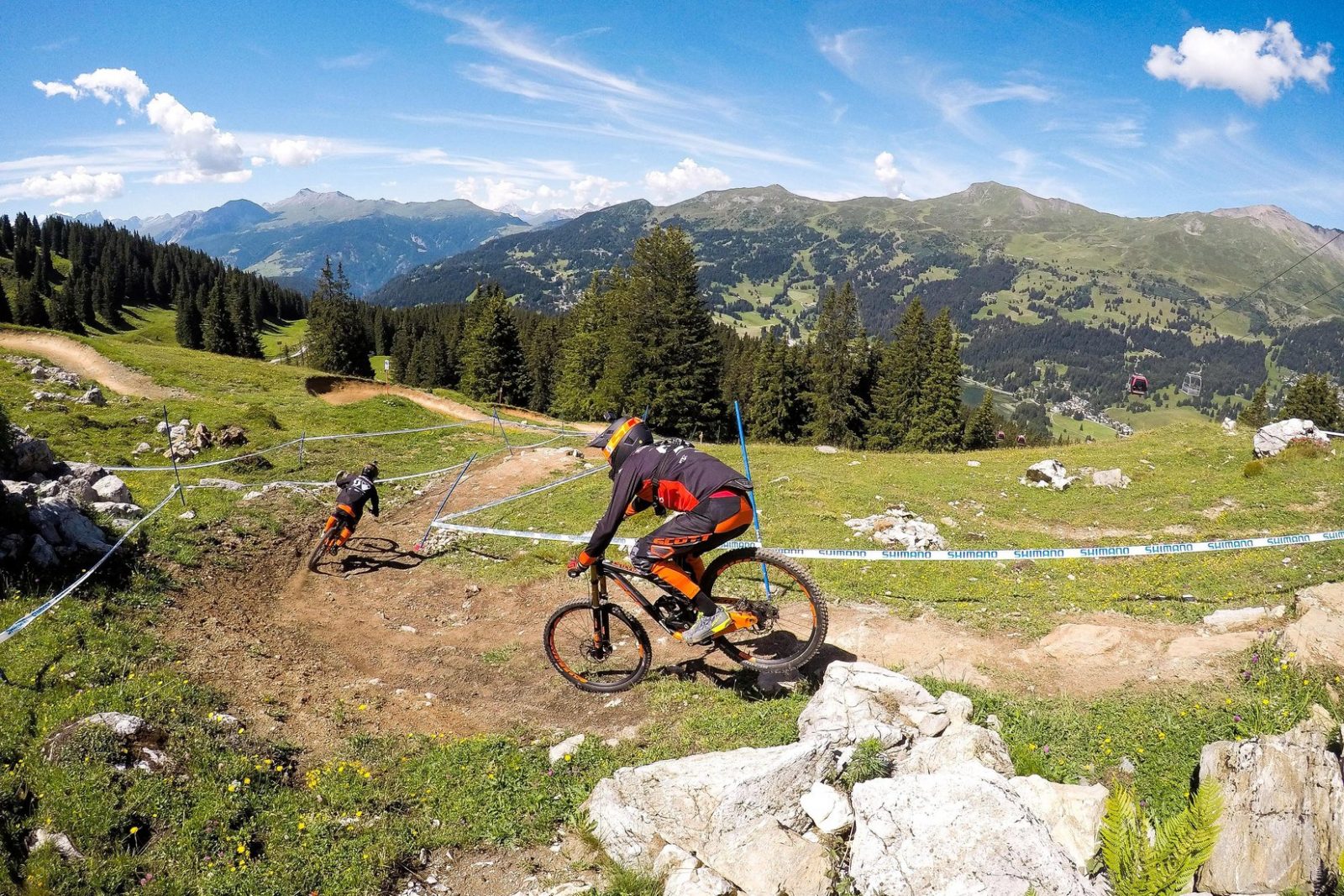Just about a year ago, RockShox announced the new Metric shock sizing standard. For lack of a better phrase, it was an effort to clean house in the vast, convoluted world of rear shock dimensions which left suspension companies constantly battling to keep track of an unnecessarily large amount of SKUs. Like most new standards in MTB, it also was met with mixed feelings and a bit of flak which eventually wore off…Beneath the surface, Metric shock sizing was also a sweeping attempt to accomplish a few other important changes in the rear shock world. As a brief overview, the new wave of Metric shocks have higher air/oil volumes and encourage frame designers to use lower leverage rates, thus lowering air spring pressures and offering better sensitivity amongst other things. From a more structural standpoint, opening up trunnion mount options help many frame designers build more integral bikes with increased rear end stiffness. Lastly, the new shocks see increased bushing overlap for better durability and decreased friction. Now that you’re up to speed on Metric shock sizing, read on to hear our thoughts on the Super Deluxe RC3 at the heart of the RockShox lineup…

Details
Damping: External rebound, 3-position compression (Open, Pedal, Lock)
Rebound Damping: Rapid Recovery
Air Spring: DebonAir, Solo Air
Weight: 440 grams (185mm X 50mm trunnion
Price: $525

One of the most glaring features on the new Super Deluxe is the massive rebound knob. Aside from that, the 3 position compression lever is relatively unchanged and still provides full open, trail and full lock modes with a flick of the lever. As expected, the shock uses a standard schraeder valve to adjust its air spring pressure.

Another cool detail is the laser etched marking for full travel, as indicated by the 50mm line above. We found this was helpful in the tuning process, particularly aboard our bike which has a sharply progressive end stroke, thus making the bottom outs a bit vague. Having a clear reference point helped de-mystify whether or not we reached full travel. Also pictured are RockShox’ crystal clear, patented sag indicators.

The guts…well part of them anyway. All you really need for a basic air spring/seal service is a strap wrench. The ham fisted amongst us might be able to remove the air can without, but considering that strap wrenches are only about $10, you may as well save yourself the grief.
Setup
Our 131mm travel Evil Calling calls for 30% sag so we set our Super Deluxe RC3 up with just that; it required roughly 197 PSI for our 185 pound tester. To provide some context to our mutterings about lower pressures in the first paragraph, our 120mm travel Evil Following featured a RockShox Monarch Debonair and required around 250 PSI to achieve 30% sag. Although it’s somewhat apples to oranges, the pressure required is dramatically lower. We’ll touch on how that affected the ride further down. Anyhow, once the sag is set and you find a good baseline rebound from bouncing in the parking lot, there isn’t much to tune other than air spring volume…

We started out with 1 Bottomless Token and we eventually opted for 2 in search of a more progressive feel. Pictured above, both installed and resting beside the shock, these are basically plug and play volume reducers which you can use to fine tune your air spring curve (read: more linear vs. more progressive) at home. All you need is a shock pump and a strap wrench. On some bikes, you don’t even have to remove the shock due to the Bottomless Tokens’ updated shape.
On the Trail
Just from bouncing around in the parking lot, the remarkably low breakaway force stood out immediately. You could practically sneeze on the saddle and we swear the shock would compress. Hyperbole aside, the shock was incredibly light off the top and super sensitive in the small bumps. We have to admit that some of this is due to the finely tuned kinematics of our Evil Calling, but it takes two to tango and this shock is very well thought out.

Long descents were met with consistent damping, something that was likely assisted by the increased oil volume, which provided better temperature management. Also keeping temperatures under control is the added bushing overlap which lowers friction. Although it’s difficult to gauge how much the trunnion mount (and aforementioned bushing overlap) actually increase the rigidity of the bike, it certainly makes sense in theory and having cartridge bearings for shock hardware as opposed to DU bushings most certainly increases the overall hardware durability.
Mid stroke support is generally more largely dictated by frame kinematics and typically less attributable to the shock itself, but we found the Super Deluxe sit up nicely in its travel and not wallow. The rebound damping had a great deal of usable range on offer and it’s never been easier to adjust a click or two while riding due to the large, grippy knob. With most rear shocks we often set and forget the rebound, but enjoyed dabbling a bit more than usual.

As far as climbing is concerned, we found the middle “trail” setting to be just right for 95% of the climbs. It provided a nicely firmed up platform, but wasn’t overly harsh when we encountered quick, technical punches. The full lock mode is very, very firm – something we appreciated on long fire road or paved road climbs.
In terms of bottom out support, we bounced between using 1 and 2 volume reducers. With just one we felt a more distinct, harsh bottom out, but with two it was harder to feel, so we’d reference the etching on the shaft. Unlike many air shocks that require higher pressures, the occasional huge g-outs and big bottom outs didn’t result in wild rodeo style bucking, allowing us to push just a bit harder without getting in over our heads.
Overall
Perhaps what we were most impressed by was the Super Deluxe’s freakishly good traction and excellent response to directional changes. Plowing through small to mid sized hits was a treat. With this rear shock, our bike felt glued to the ground, however it was still lively, poppy and supportive. We feel that riders from 120-240 pounds could likely find an appropriate range in tuning by using anywhere from 0-3 reducers, thus keeping things rather simple – at least on our frame anyway. We’ve said it before and we’ll surely say it again, but lower pressures and lower leverage rates are where it’s at.

After 6 months of heavy hammering and zero service, this is what the air can looked like despite being ridden in mud and dust then hit with the hose repeatedly. The outside of the shock was cleaned before we took this photo, but we didn’t touch the inside, which revealed clean grease and oil. The shock bushings in the lower eyelet haven’t developed any play and the bearings on the trunnion end are as good as new.

Just a couple of years ago, as riders began to really push mid travel bikes, they looked to DH style air shocks to help their bikes better manage the added abuse. In our opinion, with the Super Deluxe being available, there is no reason whatsoever to go that route. In fact we feel that in a broad sense, this shock outperforms all of the heavier duty air shocks that we’ve ridden to date. The only problem is that if you’re considering one as an upgrade for an older bike, you’re probably out of luck as your older bike probably doesn’t use Metric sizing. That said, if you’re considering a newer bike that’s spec’d with a Super Deluxe, you will surely be impressed by its performance.








